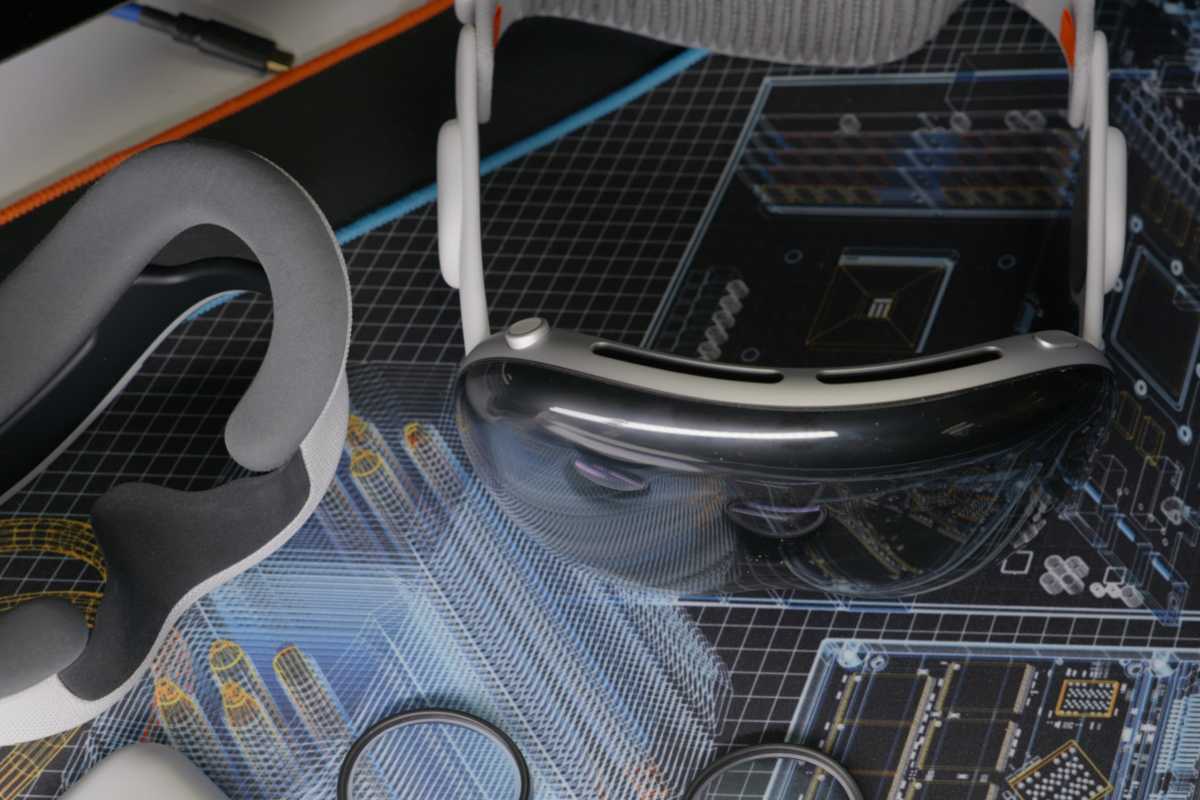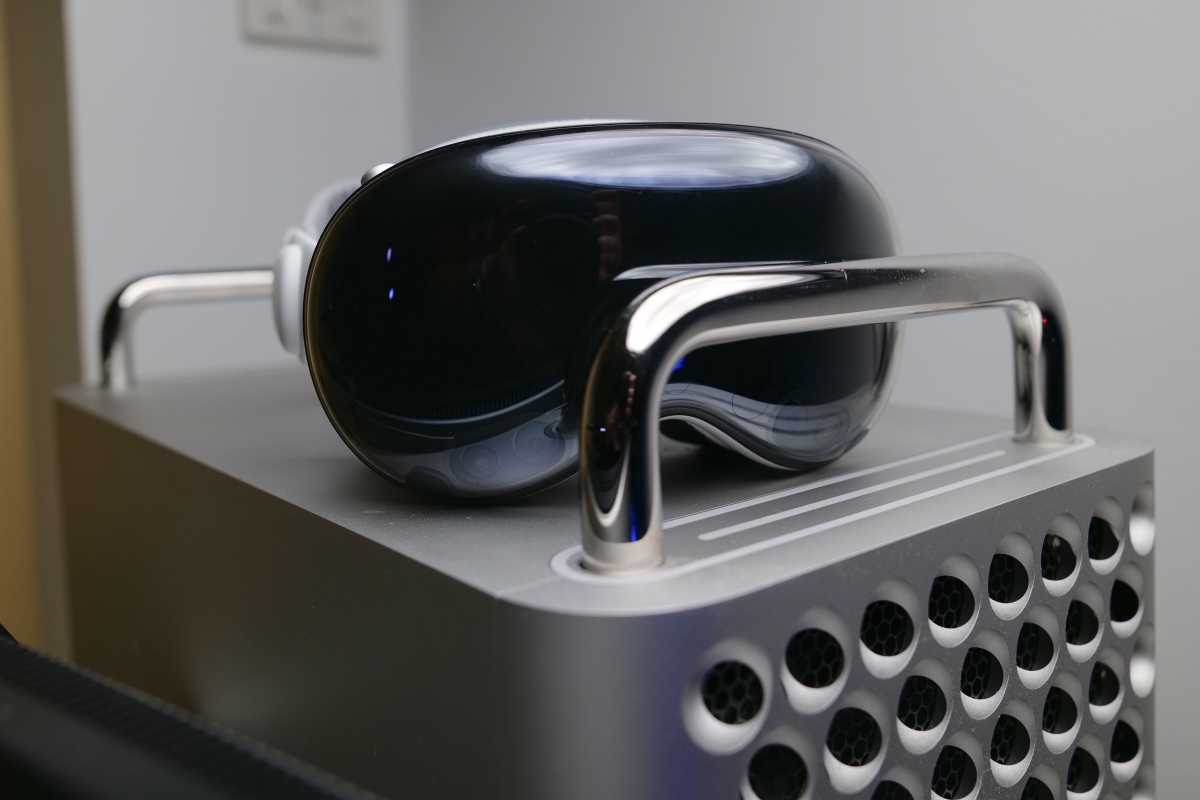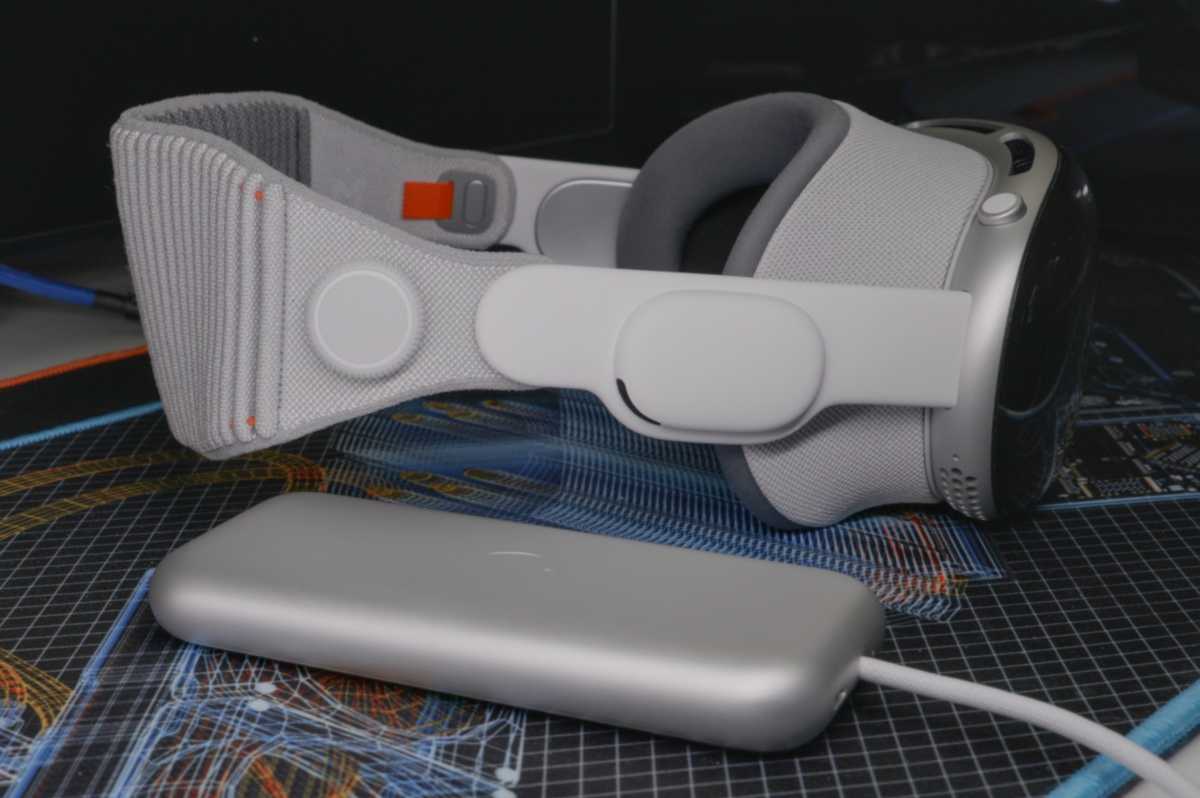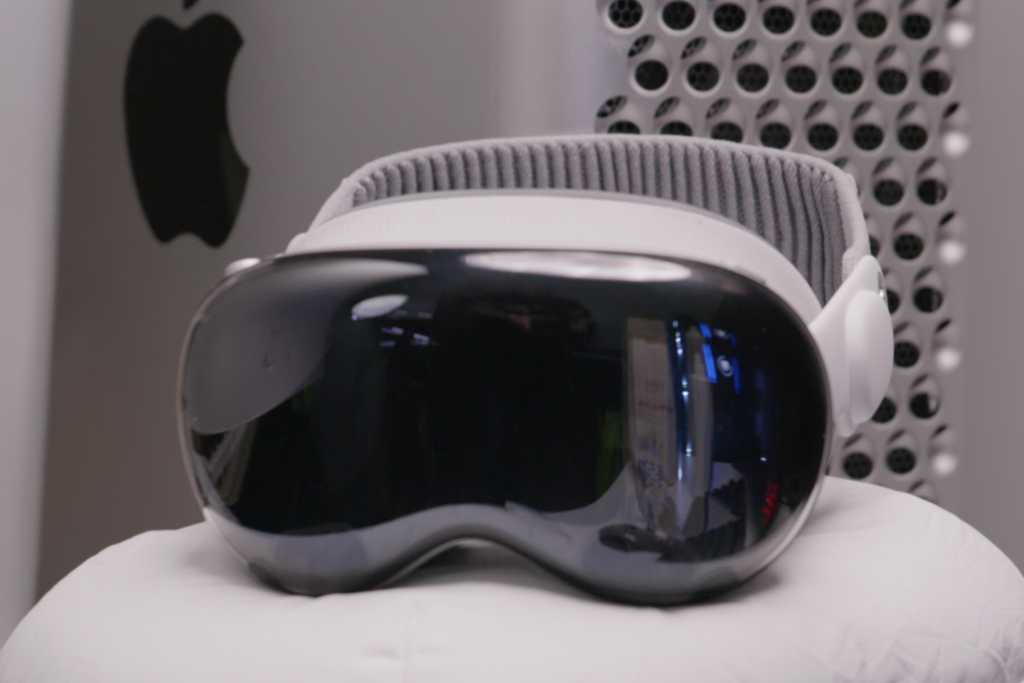
The Apple Vision Pro is an enigma–it’s incredible technology in search of a compatible use case. Its immersive movie and 3D experiences delight the senses. But the headset’s real-world use case is, right now, far from practical. Apple touts spatial computing and the Vision Pro as the future of computing, but the very practical MacBook Pro is not going away anytime soon. And Vision Pro has a nifty party trick–the ability to replicate a Mac desktop. This opened the gateway to the Mac and Vision Pro tie-in.
Based on my experience, Mac Virtual Display is an ingenious way to show that the Vision Pro holds promise as a Mac counterpart. But we are at the very early stages of this relationship–there’s a lot that needs to be done, but there’s a lot of potential. Here’s how I see how the Vision Pro can augment the Mac in a meaningful way.
Apple Vision Pro: Not easy to be productive
With Mac Virtual Display, the Vision Pro is essentially a gigantic display for the Mac. You can pin various windows around you for your workflow. For example, you can have an Excel spreadsheet open with Safari and a PDF file on another floating wall. Your Apple Music library can also float and be used as you see fit.

As a stand-alone device, the Apple Vision Pro is very limited for getting work done.

As a stand-alone device, the Apple Vision Pro is very limited for getting work done.
Thiago Trevisan/Foundry

As a stand-alone device, the Apple Vision Pro is very limited for getting work done.
Thiago Trevisan/Foundry
Thiago Trevisan/Foundry
But the reality is, that being productive–whether it’s using an office app or editing a video–is a mixed bag on the Vision Pro. In visionOS 1, most apps aren’t made for spatial computing and an external keyboard and mouse are essential for accurate work. Apps like Microsoft Word or Excel have a user interface not designed with Vision Pro finger gestures in mind. Editing photos in Photoshop does give you the benefit of an immersive and sharp display, but again, you need to use a mouse/stylus and keyboard. The same can be said about Final Cut Pro. I found that extended work requiring pin-point accuracy was fine if I used a mouse and keyboard. And as immersive as the experience is, it doesn’t beat a good-quality external monitor.
visionOS 2 coming this fall will take a few steps toward fixing the experience. For one, it will bring mouse support as well as showing the physical Magic Keyboard even when they are fully immersed in an Environment or app. And Mac Virtual Display will be enhanced with “an ultra-wide display that is equivalent to two 4K monitors side by side.” Both will help immensely, but until the most popular apps are updated to truly take advantage of Vision Pro’s unique interface, the experience won’t be all it can be.
The comfort of the Vision Pro is also an issue. With its considerable heft, sitting up straight for a few hours produces fatigue. I also found that my eyes tend to get dry with extended use and this alone limits some of the Mac interaction with Vision Pro. Having the proper light seal and adjusting the straps can go a long way in making it more comfortable, but it’s still not perfect.
Apple Vision Pro: What it does well with a Mac
As great as Apple’s latest Macs are, it’s a platform that is stuck in a certain technological timeline–it’s a stale platform. Vision Pro has opened the door to some possibilities of what a Mac tie-in can do.
Vision Pro, thanks to its immersive 3D capabilities, can bring objects to life in a way the Mac can’t. For example, if you want to show a client your latest high-tech engine concept, you can really show them the nuts and bolts of what you created on a Mac through Vision Pro. An app such as JigSpace lets us create some very impressive spatial objects in front of us with a technical emphasis. While it’s still in its early stages now, Apple Vision Pro allows you a much deeper and more accurate depiction of what you’ve created on a Mac.

The Vision Pro is an excellent way to demonstrate 3D creations made on a Mac.

The Vision Pro is an excellent way to demonstrate 3D creations made on a Mac.
Thiago Trevisan/Foundry

The Vision Pro is an excellent way to demonstrate 3D creations made on a Mac.
Thiago Trevisan/Foundry
Thiago Trevisan/Foundry
But it’s not just with professional-level video and graphics apps. Picture this: You’ve made an Excel spreadsheet with graphs you want to present. You can take that data and form 3D graphical representations that can be shown through Vision Pro.
With Vision Pro’s ability to take immersive video and photos, there is even a built-in capability for future demonstration. For example, you can take an immersive video of a construction project or real-world job site and show that to others to get a more accurate view than a drawing. Real estate agents can also use this ability to show the layout of a house for sale, without the client needing to be present.
Apple Vision Pro: Next-level collaboration
Using the Mac or even an iPhone or iPad for collaboration works well but it’s a “flat” experience. This is where the Vision Pro can not only supplement a Mac but become the primary tool. Its immersive nature allows it to do things a Mac will never be able to do. With apps such as Zoom natively available for Vision Pro, there is a huge benefit to users who require lots of interactions and collaborations with others.
Take FaceTime and its ability to share your Vision Pro screen. Even if the other party is on an iPhone or Mac, they will be able to see exactly what you see. You can show them, in real-time, your Safari browser or any other open app, and explain things as if they were in the same room. You can even browse through photos or a PDF document and demonstrate to them in a visually direct way. This is something akin to sharing your Desktop view, but it becomes so much more effective when inside Vision Pro. It feels more fluid and personal, being able to immediately manipulate one’s environment and share it with another user.

I creted this 3D model of an engine on a Mac and used the Vision Pro to demonstrate it.

I creted this 3D model of an engine on a Mac and used the Vision Pro to demonstrate it.
Thiago Trevisan/Foundry

I creted this 3D model of an engine on a Mac and used the Vision Pro to demonstrate it.
Thiago Trevisan/Foundry
Thiago Trevisan/Foundry
In theory, only the main user would need Apple Vision Pro, while others can follow along on any screen such as an iPad. The Vision Pro hand gestures and eye tracking are great for these types of activities. Moving windows around and flipping through photos don’t require the same precision that would require a mouse, for instance.
The issue comes down to available apps and not necessarily the capabilities of Vison Pro. While new apps are coming, it is still a limited set compared to what is available on a Mac or iPad.
Apple Vision Pro: iPad precedent
While it’s still early to judge the fate of the Vision Pro, it may end up being in a similar scenario as the iPad has had with the Mac. Over time, the iPad transformed into a capable sidekick to a Mac Pro or MacBook Pro. Enhanced productivity is something it does well as a companion, but the iPad is still quite capable as a stand-alone platform, and it can replace a MacBook Pro for many tasks.
The iPad also has a tremendous number of auxiliary use cases. For example, when visiting the top of One World Trade Center in Manhattan, visitors are handed an iPad to help orientate them with the surrounding buildings. How much more effective would that experience be with a finely-tuned Vision Pro? Visitors can see with its pass-through abilities, with superimposed data as needed. Typical computers (iPad included) cannot do this with the same level of depth and immersion.

The Apple Vision Pro will eventually find its true purpose–perhaps it will have the same route as the iPad.

The Apple Vision Pro will eventually find its true purpose–perhaps it will have the same route as the iPad.
Thiago Trevisan/Foundry

The Apple Vision Pro will eventually find its true purpose–perhaps it will have the same route as the iPad.
Thiago Trevisan/Foundry
Thiago Trevisan/Foundry
Right now, the Vision Pro does behave nicely as a desktop counterpart, but certainly not as a replacement. Users who will find it helpful will be the more daring, enthusiast crowd that will want to try the immersive aspect of Vision Pro in productivity environments.
As the platform develops, eventually, the Apple Vision Pro won’t need a Mac to get certain things done, just like the iPad became independent of its Mac family in a sense. The future looks bright, and one day, the Vision Pro may put all the pieces of the puzzle together.




